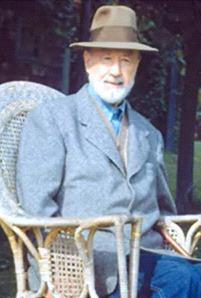GRANTS, NM—Charles Ives, an American composer, was the subject of the New York Philharmonic’s Young People’s Concert with musical director Leonard Bernstein. The February 23, 1967 presentation was an educational combination of United States history and an introduction to the compositions of Charles Ives (1874-1954).
His exciting music is a surprise at first. Ives, an actuary as well as a composer, heard music in a way that was ahead of his time. Actuaries solve complex calculations, and Ives compositions were exactly that. They are complex in their inclusion of bits of vernacular music surrounded by original scores that result in multifaceted inspired works.
The first of his works presented was, as Bernstein noted, under two minutes. “The Gong on the Hook and Ladder” or “Fireman’s Parade on Main Street.” If you listen closely, the familiar tune you might be able to discern amidst the chaotic orchestration is the folksy “My Darling Clementine” with discordant clusters of strings or timpanis in the composition. What do the musicians think about learning such a different piece? Maybe it is a refreshing challenge? How do you conduct such a piece? Bernstein considers Ives’ work and creativity to be “fun and unjustly belittled” by some.
The conductor referred to Ives as a “genius and a pioneer”, “Mark Twain, Ralph Waldo Emerson, and Lincoln” all rolled into one. His compositions with atonal elements of two or more pieces being played at the same time can only be accomplished with talent, which according to Bernstein, and others, Ives has in abundance.
The New York City Philharmonic Orchestra playing “The Gong on Hook and Ladder” conducted by Leonard Bernstein. Photo credit: CBS Ives’ creative expressions challenge the accepted masters, but at the same time he honors them, including phrases from their compositions using free dissonant sounds, sometimes playing the piano using fists, palms, or even rulers. Can you imagine? Probably not. We need to listen to his works that use stanzas of Americana such as “Columbia, the Gem of the Ocean”, “Mine Eyes Have Seen the Glory”, and “Yankee Doodle”, all in competing time frames. This is done in “Fourth of July”.
The musically untrained listener might think his work is somewhat like a musical version of a Jackson Pollock painting. There are various directions, paths of crisscrossing colors and or various intensities. Bernstein defines them as “off-beat ideas, … music that no one could decipher, no one could play, and no one cared to hear.”
In “Washington’s Birthday” Ives uses five or more musical quotes, “reminders of the old days, music that he heard as a boy.” For instance a French horn singing out 'Way Down Upon the Swanee River', if you can recognize it. There is the actual celebration segment that sounds somewhat like a ballet, but contains such references as “Sailor’s Hornpipe” with a flute, “Camptown Races” on a French Horn, and “Turkey in the Straw” played on, I think, a piccolo.
The third example of Ives’ genius played by the Philharmonic was “The Circus Band March” from 1894. Written in two versions, one for band chorus played without the chorus because Bernstein explained that it wouldn’t be heard anyway. The piece sounds very much like the marches we would expect to hear.
Called not only a Songwriter but also a patriot, and compared to Walt Whitman, the fourth Ives composition was a song, “Lincoln, The Great Commoner”.
Bass Baritone, Simon Estes, singing “Lincoln, the Great Commoner.” Photo credit: CBS The fifth and last composition, “The Unanswered Question” from 1908, asks “why do we exist,” in a tone that sounds like a question. The cloudy tones are reminiscent, to me, of the Bible book of Genesis and the story of God’s creation of the earth. “Now the earth proved to be formless and waste and there was darkness upon the surface of [the] watery deep; and God’s active force was moving to and fro over the surface of the waters.”
Another listener, C.L. Peterson, Cibola Arts Council volunteer, thought the sounds were more like “2001-A Space Odyssey.” Outside, the wind was blowing as we listened to this final piece, and it seemed a very appropriate backdrop to the eerie sounds of the orchestra.
We are all looking forward to the next concert on Friday, April 12, at 4 p.m.

